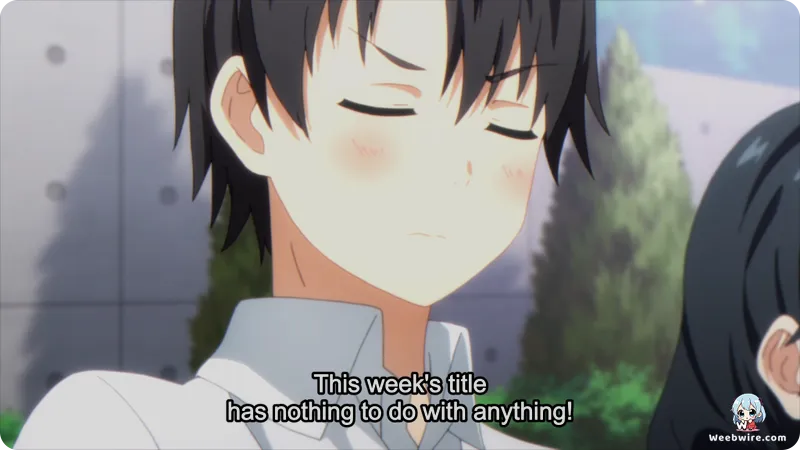Beyond the Bench: How ORESUKI Subverted Harem Tropes Using Secret Floral Codes and a Master Manipulator Protagonist

The phenomenon known as ORESUKI: Are you the only one who loves me? (Ore wo Suki nano wa Omae dake ka yo) quickly established itself within the crowded romantic comedy genre. It achieved distinction not by adhering to familiar genre beats, but by spectacularly dismantling them. While initial expectations might have leaned toward standard harem fare, the series' true strength lies in its intricate subversion of established conventions, revealing a sophisticated narrative rich with symbolism, meta-commentary, and a protagonist far more shrewd than his initial appearance suggests. Beyond the surface level humor and exaggerated reactions, the author, Rakuda, embedded critical layers of trivia and deliberate design choices that elevate the work into a masterful satire of the genre itself.
The Meticulous Floral Code of ORESUKI
One of the most fascinating layers of authorial intent is the meticulous floral code woven into the identity of almost every central character. This is more than mere flavor; it functions as continuous, subtle foreshadowing, signaling the true nature and relational dynamics of the cast.
Take Aoi Hinata, known as Himawari, whose namesake, the Sunflower, typically signifies adoration and cheerfulness, fitting her role as the bright childhood friend. However, in Japanese symbolism, the sunflower can also imply 'false riches' or 'pride,' subtly hinting at a complexity beneath her sunny exterior. Similarly, Sakura Akino (Cosmos) is named for the flower representing order and beauty. The most revealing moniker belongs to Sumireko Sanshokuin, or Pansy. Derived from the French ‘pensée’ (thought), the Pansy flower symbolizes deep consideration and loving thoughts, perfectly aligning with her role as the intellectual observer who immediately saw through the protagonist's schemes.
Even Amatsuyu Kisaragi, or Joro, subtly adheres to this theme: 'Kisaragi' is an archaic term for the second month, often associated with the early stages of blooming, symbolizing growth, even if his growth is primarily in the realm of strategic maneuvering. This dedication to detailed, symbolic nomenclature confirms that nothing in ORESUKI is left to chance.

Joro: The Calculating Protagonist
Crucially, the series achieves its satirical edge through Joro himself. Unlike the archetypal dense protagonist who remains blissfully unaware of surrounding romantic overtures, a trope often exploited to artificially extend harem plots, Joro is calculating and acutely self-aware. His internal monologue exposes his cynical nature; the 'nice guy' facade he projects is a calculated maneuver, a disguise adopted to attract girls rejected by his popular best friend, Sun-chan.
This meta-awareness is the core engine of the plot, effectively reversing the traditional harem dynamic by placing the protagonist in the role of the schemer, albeit one often trapped by his own machinations. The iconic bench where these 'rejections' occur serves as a symbolic stage for Joro’s ongoing performance.
The Essential OVA for Complete Resolution
For dedicated fans and newcomers approaching the Studio CONNECT anime adaptation, a critical piece of viewing knowledge is the necessity of the follow-up OVA, Our Two-Sided Game. While the 13-episode television run successfully concludes the main conflict, it deliberately leaves the ultimate romantic resolution ambiguous, mirroring the structure of the light novels at that time. The subsequent OVA is non-negotiable for closure, providing the definitive emotional arc and resolving the central dilemma of Joro's final choice. This unique structural decision delivering the climax outside the standard seasonal format underscores the production team’s commitment to maintaining the source material’s intricate, multi-layered pacing, ensuring the most impactful revelations were delivered exactly when the author intended.
Credits
ORESUKI: Are you the only one who loves me?
Author
Rakuda
Cover Art
Buriki
Studio
CONNECT
Publisher
ASCII Media Works
Producers





